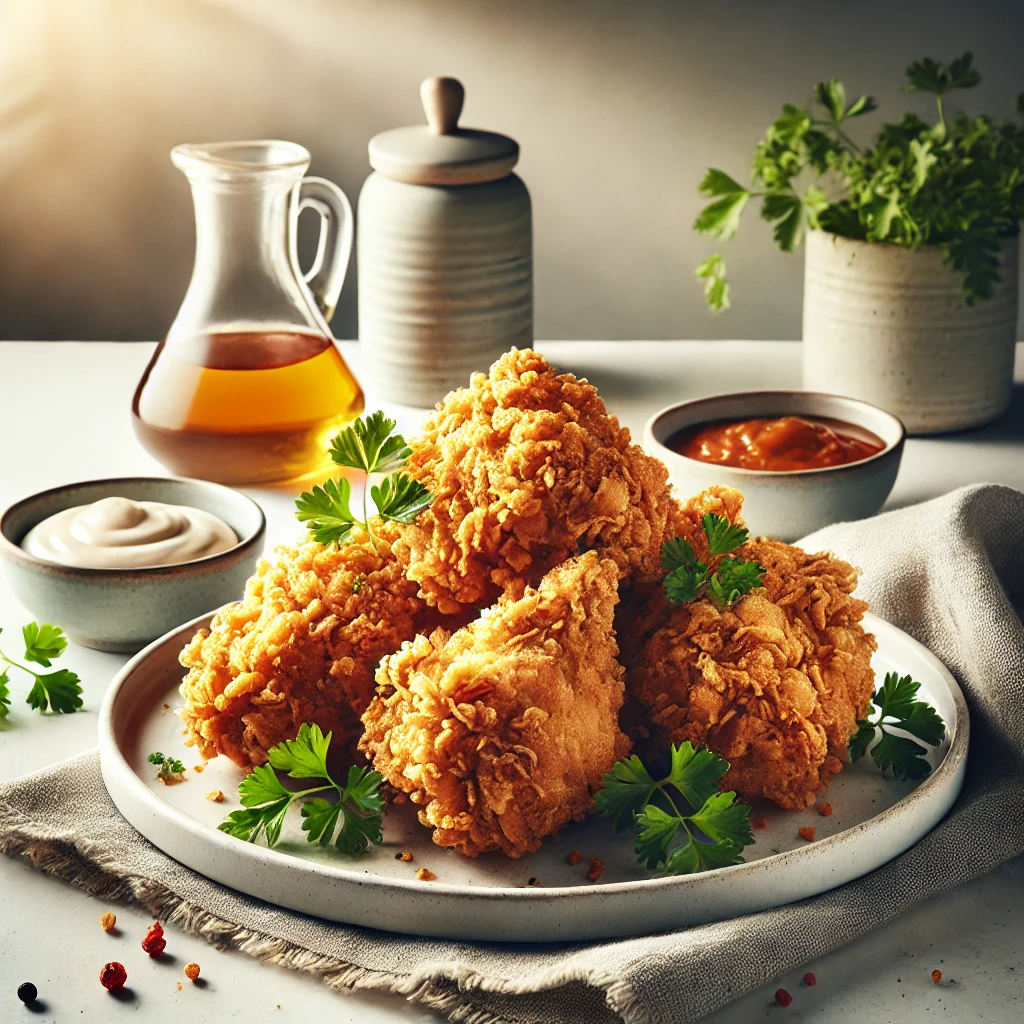Introduction: The Worldwide Love for Fried Chicken
Fried chicken has become a beloved dish worldwide, with every country, culture, and family adding its unique twist to it. But where did this delicious dish originate, and who can truly claim its invention? While the roots of fried chicken trace back centuries, its journey through various cultures makes it a fascinating story of adaptation and evolution.
Early Origins of Fried Chicken
African Influence on Fried Chicken
In many West African cultures, people used to fry or sauté poultry in palm oil, a method passed down through generations. Enslaved Africans brought this culinary knowledge to America in the 17th and 18th centuries, where it blended with European frying techniques. The traditional African seasonings also played a significant role in the evolution of the flavors we associate with Southern fried chicken today.
European Contributions: Scottish Fried Chicken
The Scots were known for frying chicken in fat, a technique different from the baking and roasting that was more popular in England. Scottish immigrants brought this technique to the Fried chicken South, where they encountered African methods of seasoning and spicing food, leading to a fusion of flavors and cooking styles that became the basis for what we now recognize as Southern fried chicken.
The Southern United States: A Cultural Melting Pot
Enslaved Africans and the Development of Southern Cuisine
The integration of African, Scottish, and Native American culinary traditions in the Southern United States contributed to the creation of what we now call Southern fried chicken. African American cooks, often working under difficult conditions, found ways to enhance simple ingredients, creating a dish that combined African seasoning methods with Scottish frying techniques. The dish became a staple of Southern cuisine, enjoyed by all social classes despite the history of its origins.
The Role of Church and Community in Southern Fried Chicken’s Rise
In Southern communities, fried chicken was often served at church gatherings and family reunions, events that allowed African American communities to celebrate their heritage and fellowship. Fried chicken became a symbol of Southern hospitality and togetherness, especially on Sundays and holidays.
The Spread of Fried Chicken in America
Fried Chicken in the 20th Century: From Home to Fast Food
Fried chicken grew in popularity across the United States in the early 20th century, thanks in part to the rise of fast-food chains. With Colonel Sanders’ Kentucky Fried Chicken (KFC) franchise, fried chicken became a mass-market phenomenon. Sanders’ unique recipe, which combined 11 herbs and spices, set the stage for a new era in fast food.
The Influence of World War II
During World War II, rationing of beef and pork made chicken a more accessible protein. As a result, fried chicken became a staple in many households across America. Soldiers returning home brought with them a taste for the dish, spreading its popularity even further.

Fried Chicken Around the World: Global Variations and Influence
Korean Fried Chicken: A Crunchy Twist
Korean fried chicken emerged in the 20th century and has become one of the most popular adaptations globally. Known for its ultra-crispy skin and double-frying technique, Korean fried chicken is often coated in a sticky, spicy-sweet sauce that distinguishes it from American versions.
Japanese Karaage: Bite-Sized Delights
Japanese karaage is another delicious take on fried chicken, involving marinating chicken in soy sauce, ginger, and garlic before coating it in flour and frying. Unlike the larger pieces in American-style fried chicken, karaage is typically served in bite-sized portions, making it a popular snack or meal accompaniment.
Latin American and Caribbean Influences
Latin American countries have their unique variations of fried chicken, often marinated with spices and herbs native to the region. In the Caribbean, jerk seasoning adds a distinct flavor profile to fried chicken, combining spices like allspice, thyme, and Scotch bonnet peppers.
Why Fried Chicken Became a Worldwide Phenomenon
The Appeal of Texture and Flavor
The crispy exterior and juicy interior of fried chicken offer a perfect balance of texture and flavor that appeals to people worldwide. The versatility in preparation and seasoning also allows each culture to make it its own, adapting it to local tastes.
Fried Chicken’s Role in Social Gatherings
Whether it’s served at family gatherings, festivals, or fast-food chains, fried chicken brings people together. It has become a symbol of comfort and celebration, enjoyed across cultures, religions, and social backgrounds.
The Evolution of Fried Chicken in the 21st Century
Gourmet Fried Chicken and Fusion Cuisine
Modern chefs have elevated fried chicken to a gourmet level, experimenting with ingredients like truffle oil, exotic spices, and organic meats. This evolution shows how fried chicken remains relevant in today’s culinary scene, continuously adapting to new tastes and trends.
The Rise of Vegan and Plant-Based Fried Chicken
As plant-based diets become more popular, the demand for vegan fried chicken has increased. Companies have developed alternatives using ingredients like soy, wheat gluten, and jackfruit to replicate the taste and texture of traditional fried chicken.
Conclusion: The Lasting Legacy of Fried Chicken
Fried chicken is more than just a dish; it’s a culinary icon with deep roots in many cultures. From its early beginnings in African and European cooking methods to its journey through American Southern cuisine and beyond, fried chicken continues to bring people together. Its legacy as a dish that transcends cultural and social boundaries makes it a beloved staple worldwide.

